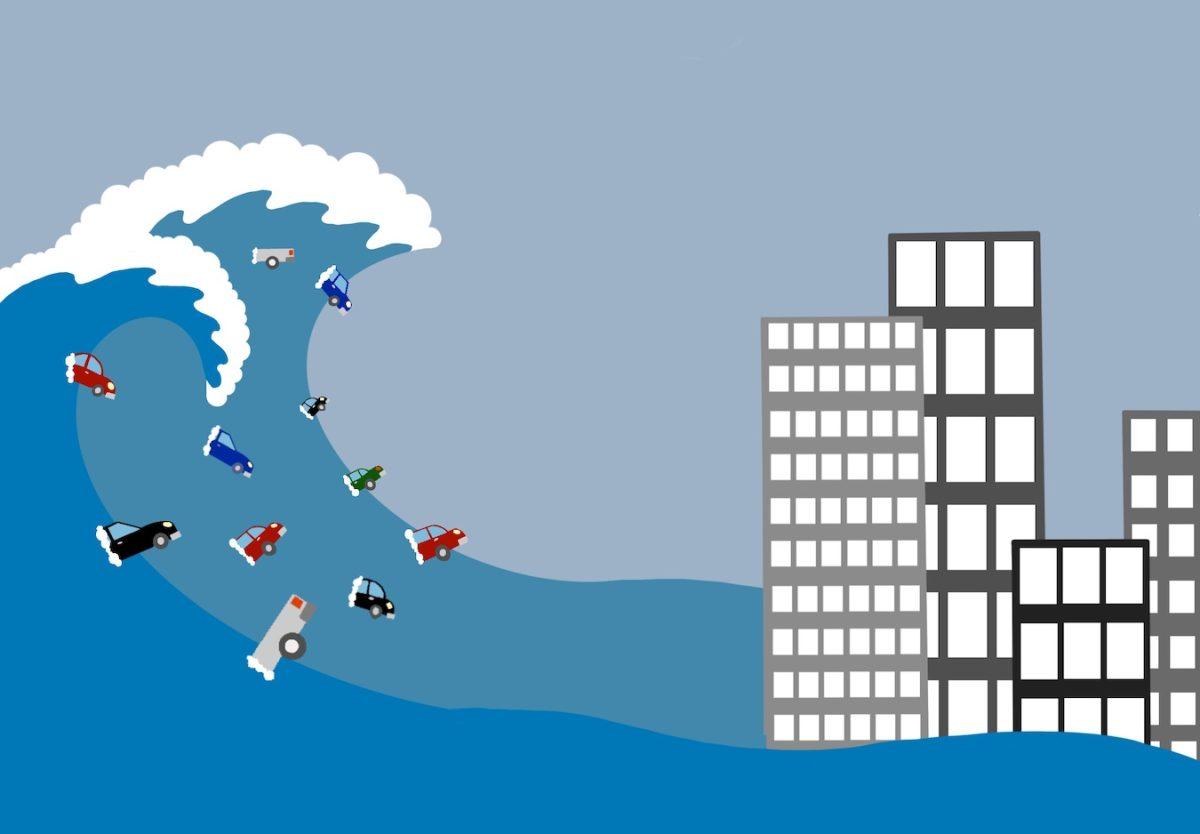
Ezra Bitterman is a freshman journalism major at MU. He is an opinion columnist who writes about elections and societal observations for The Maneater.
A few months ago, I analyzed how Hollywood has been coerced into propagandizing a rosy interpretation of our Middle Eastern wars.
Today I’ll be looking at how Hollywood has failed to recognize civilizations’ greatest threat: climate change.
If the current rate of global warming continues until 2030, the planet will suffer from irreversible ecosystem damage and significant sea-level rise. Hollywood needs to step up to the challenge using its vast viewership to start conveying the urgency of the climate situation.
Natural disasters are common in blockbusters, yet they almost always occur due to something unrelated to human activity. In “San Andreas,” a large earthquake causes all sorts of natural crises forcing Raymond “Ray” Gains, played by The Rock, to go into action and save his family. Or “2012,” where it’s revealed the Earth has an expiration date in the year of 2012, when a series of natural catastrophes will destroy humanity. While there are a multitude of films within this genre, movies about humans’ effects on the planet are few and far between.
Movies about humans destroying the planet are just a bummer. Who would pay money to see a movie about how you, the moviegoer, are actively causing extreme danger to humanity? Movies about climate change turn the antagonist from some fictional character or disaster to the audience. Whereas in movies about fictional tornadoes or tsunamis, you get a very traditional Hollywood setup: a man, against all odds, saves the ones he loves most and learns some fortune cookie wisdom from it. There’s very little incentive to buck the trend when studios roll out a box office hit over and over.
In the documentary world, however, climate change is a common subject. Former Vice President Al Gore’s An Inconvenient Truth, the 22nd highest-grossing documentary ever, harshly presents the dangers of continued climate inactivity, chilling the viewer to their stomach. But documentaries, in general, are viewed by a more niche population. No documentary rivals the box office success of a successful major motion picture. At its core, documentaries are seen to challenge or educate — while movies are more for entertainment.
Unwillingness to approach sustainability is not a worldwide trend. Specifically, filmmakers in Japan and South Korea embrace the subject into their styles. In Japan, Studio Ghibli has long told heartfelt metaphorical stories with deep environmental undertones. A powerful example is “Spirited Away,” where a massive sludge comes in to take a bath. Everyone mocks the creature, but once the film’s protagonist pulls out an object from the creature’s side, a sea of human trash piles out, revealing the creature was a river spirit bogged down with human waste. Studio Ghibli’s movies are blunt yet powerful in how they personify humans’ effect on nature. In South Korea, writer and director Bong Joon Ho — creator of best picture winning “Parasite” — beats at the same drum. His movies “Mother,” “Okja” and “The Host” all have environmental undertones.
Ho and Ghibli provide a framework for how Hollywood can approach the climate issue. First off, they are not making movies explicitly about climate change. Their movies challenge the viewer to think about their actions and spawn discussion regarding human’s relationship with the world.
Ho had a quote in a recent interview with Shem Bitterman that perfectly encapsulates how Hollywood needs to go forward with sustainable storytelling.
“I firmly believe that the film itself should be beautiful as it is,” Ho said. “There is absolutely no need to make it into ‘propaganda’ which attempts to sway the media or to instigate the public, or even to change society. It is my opinion that it would be best to pursue the beauty of the film itself and to have the message steeped within it naturally.”
Ho is right, filmmakers should be conscious and honest in the world around them by incorporating themes of climate change. It would be detrimental if Hollywood started pumping out movies directly condemning people for driving. Just like it’s damaging for Hollywood to come out with movies unfairly aggrandizing the military. Then the industry swerves into strategic communication, not art. Art is not about telling people how to think but rather getting them to think. Hollywood needs to start thinking again.
To inspire action, movies need hope. Disney Producer Roy Conli — Tangled, Big Hero 6, Penguins — spoke to this in a recent interview.
“Oftentimes in the climate discussion, the only power one has is to individually step up and stop the un-sustainability issues in their own lives…,” Conli said. “I think you have to leave an audience with a sense of hope, otherwise, people walk away despondent and won’t act. The kind of storytelling that works the best is a call to action.”
While honesty is essential, it’s also important to show promise for the future. Climate movies should be about people using sustainability to overcome adversity so the viewer feels like they can as well. Many issues surrounding climate change seem daunting, but if the film industry focuses on how individuals can make a difference, the audience will be empowered.
Filmmakers are not documenters. It’s not about jamming in climate facts, but using narrative structure to be honest about how humans affect the planet. Learning a few lessons from Ho and Ghibli can help relieve the stigma surrounding climate-based movies and lead us to honest — and still commercially successful — Hollywood. Inspiring people with hope is necessary to prevent people from closing themselves off. America has the largest film industry in the world. It’s time we set an example with sustainable storytelling.
The Environmental Media Association is committed to making Hollywood sustainable.
Edited by Sarah Rubinstein | [email protected]